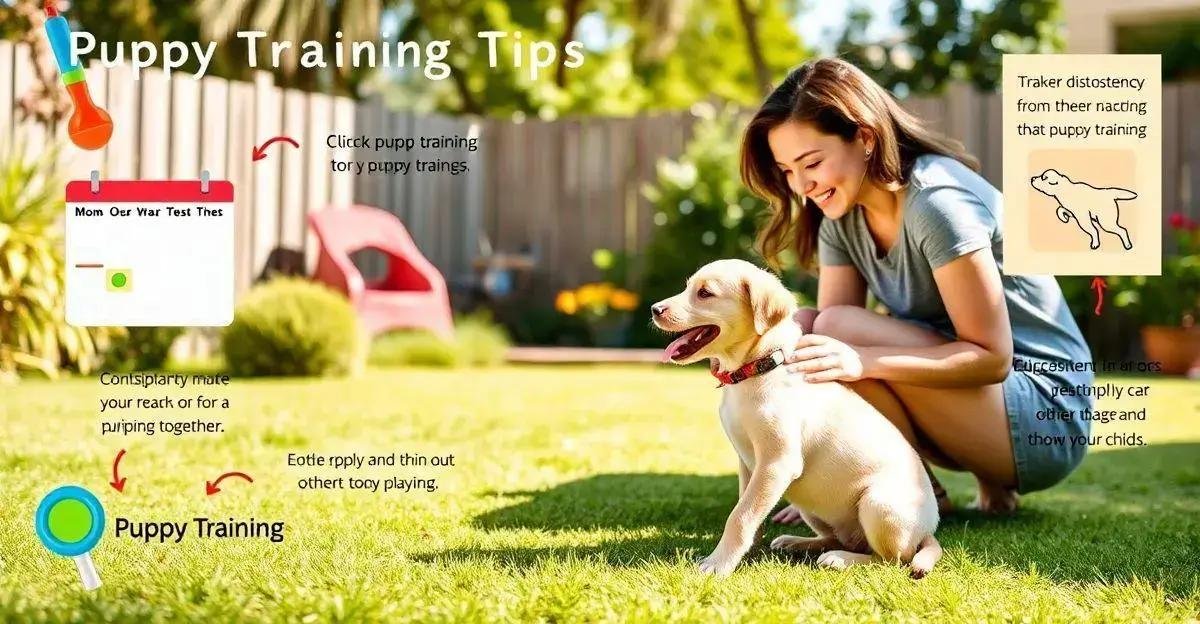Are you struggling to navigate the world of puppy training advice? With the right guidance, you can transform your furry friend into a well-behaved companion.
As a responsible pet owner, it’s essential to understand the importance of consistency, patience, and positive reinforcement in puppy training.
In this article, we’ll explore expert puppy training advice, share tips and tricks for overcoming common challenges, and provide a comprehensive guide to help you achieve your goals.
Whether you’re a seasoned dog owner or a first-time pet parent, this article is designed to provide valuable insights and practical advice to help you master puppy training.
Getting Started with Puppy Training
Before you start training your puppy, it’s essential to understand the importance of a solid foundation. This means establishing a routine, setting clear boundaries, and being consistent in your approach. A well-planned training program will help you build trust with your puppy, prevent behavioral problems, and ensure a strong bond between you and your furry friend.
Start by setting clear goals for your puppy’s training, such as basic obedience commands like ‘sit’ and ‘stay.’ Then, establish a schedule that includes regular training sessions, socialization, and playtime. Remember to be patient and reward good behavior with treats and praise.
With a solid foundation in place, you’ll be well on your way to raising a well-behaved and loving companion.
The Importance of Consistency and Patience

Consistency and patience are the foundation of successful puppy training. It’s essential to establish a routine and stick to it, as puppies thrive on predictability and familiarity. This means setting a specific training schedule and adhering to it, even on weekends and holidays.
Consistency also applies to rewards and punishment, as puppies need to understand what behavior is expected of them. Be patient with your puppy, as they may not grasp new concepts immediately. Remember, puppy training is a process that requires time, effort, and perseverance.
Don’t get discouraged by setbacks or mistakes – they’re an essential part of the learning process. By being consistent and patient, you’ll build trust with your puppy and lay the groundwork for a strong, lifelong bond.
Puppy Training Tips for Specific Behaviors
Puppy training is not a one-size-fits-all approach. Different breeds, ages, and temperaments require unique training strategies. For example, puppies under 16 weeks old require more frequent, shorter training sessions, while older puppies can focus on more complex behaviors.
Potty Training:
Establish a consistent routine, take your puppy out frequently, and praise them for successful outings.
Bite Inhibition:
Use toys and treats to teach your puppy to control their jaw strength.
Shedding:
Brush your puppy regularly to reduce shedding and prevent matting.
By understanding the specific needs of your puppy and tailoring your training approach, you’ll be well on your way to raising a well-behaved and loving companion.
Addressing Common Puppy Training Challenges

Puppy training can be challenging, especially when faced with common issues like housebreaking accidents, biting, and excessive barking. To overcome these challenges, it’s essential to understand the underlying causes and develop strategies to address them. For example, housebreaking accidents may be due to a lack of consistency in training or not providing enough opportunities for your puppy to eliminate.
Redirecting Biting:
Use toys and treats to redirect your puppy’s biting behavior, teaching them to control their jaw strength.
Managing Excessive Barking:
Identify the triggers for your puppy’s barking and address them, such as providing enough exercise and mental stimulation.
By understanding the root causes of common puppy training challenges and developing effective strategies to overcome them, you’ll be well on your way to raising a well-behaved and loving companion.
Creating a Puppy Training Schedule
Creating a puppy training schedule is essential for effective training and consistent progress. A well-planned schedule helps you stay organized, ensures your puppy receives consistent training, and allows you to track progress.
To create a puppy training schedule, start by identifying your goals and the behaviors you want to focus on. Then, break down your training sessions into smaller, manageable chunks, and allocate specific times for each activity.
For example, you might dedicate 10 minutes to basic obedience training, followed by 10 minutes of playtime. Be flexible and adjust your schedule as needed to accommodate changes in your puppy’s needs or your own schedule.
By creating a puppy training schedule, you’ll be able to provide your puppy with the structure and consistency they need to thrive.
Conclusion: Mastering Puppy Training Advice

In conclusion, mastering puppy training advice requires a combination of consistency, patience, and effective training strategies. By following the tips and advice outlined in this article, you’ll be well on your way to raising a well-behaved and loving companion.
Remember to stay committed to your training goals, be patient with your puppy, and adapt your approach as needed.
With time and practice, you’ll master the art of puppy training and enjoy a lifelong bond with your furry friend.
FAQ – Frequently Asked Questions about Puppy Training
What are the most important things to consider when starting puppy training?
Consistency, patience, and effective training strategies are key to successful puppy training. Start by setting clear goals and establishing a routine, and be patient with your puppy as they learn.
How can I overcome common puppy training challenges?
Identify the underlying causes of the challenges and develop strategies to address them. For example, if your puppy is having trouble with housebreaking, try increasing the frequency of training sessions and providing more opportunities for elimination.
What are some tips for creating a puppy training schedule?
Start by identifying your goals and the behaviors you want to focus on, then break down your training sessions into smaller, manageable chunks. Be flexible and adjust your schedule as needed to accommodate changes in your puppy’s needs or your own schedule.
How can I ensure my puppy is getting enough exercise and mental stimulation?
Provide your puppy with a variety of activities, such as walks, playtime, and interactive toys, to keep them physically and mentally active. Aim for at least 30 minutes of exercise and mental stimulation per day.
What are some signs that my puppy is not getting enough exercise and mental stimulation?
Watch for signs of boredom, such as destructive behavior, excessive chewing, or lack of appetite. If you notice any of these signs, try increasing the amount of exercise and mental stimulation you provide.
How can I reinforce good behavior in my puppy?
Use positive reinforcement techniques, such as treats and praise, to reward good behavior. Avoid punishment or negative reinforcement, as this can create anxiety and fear.




